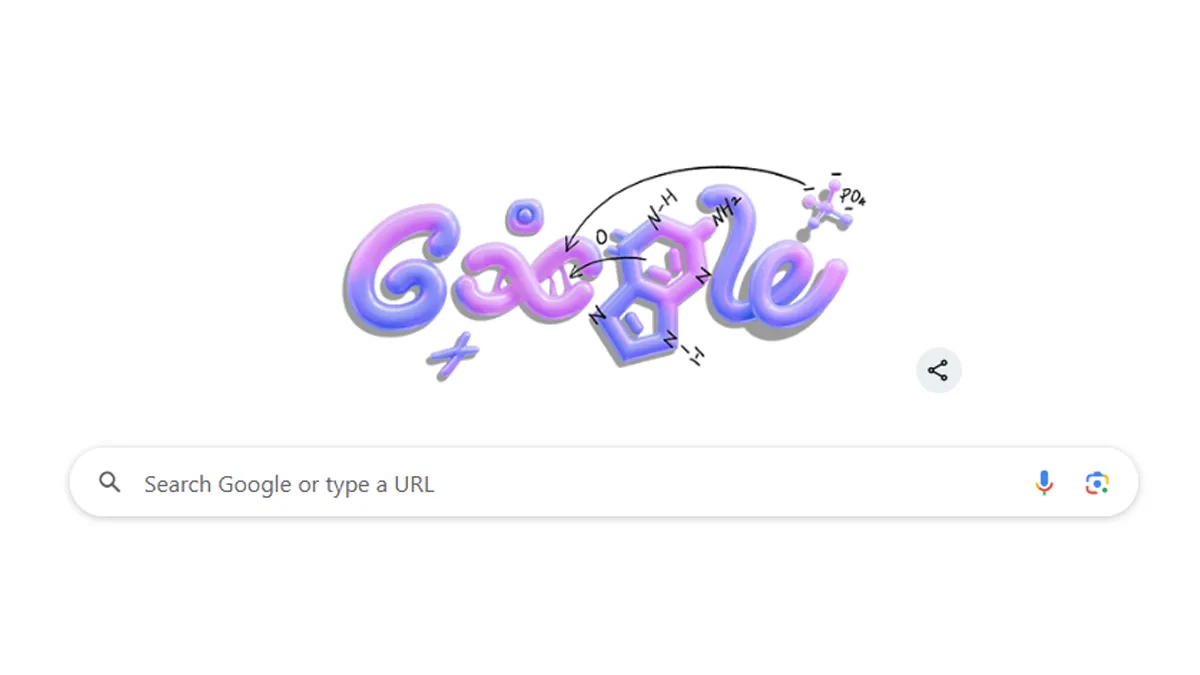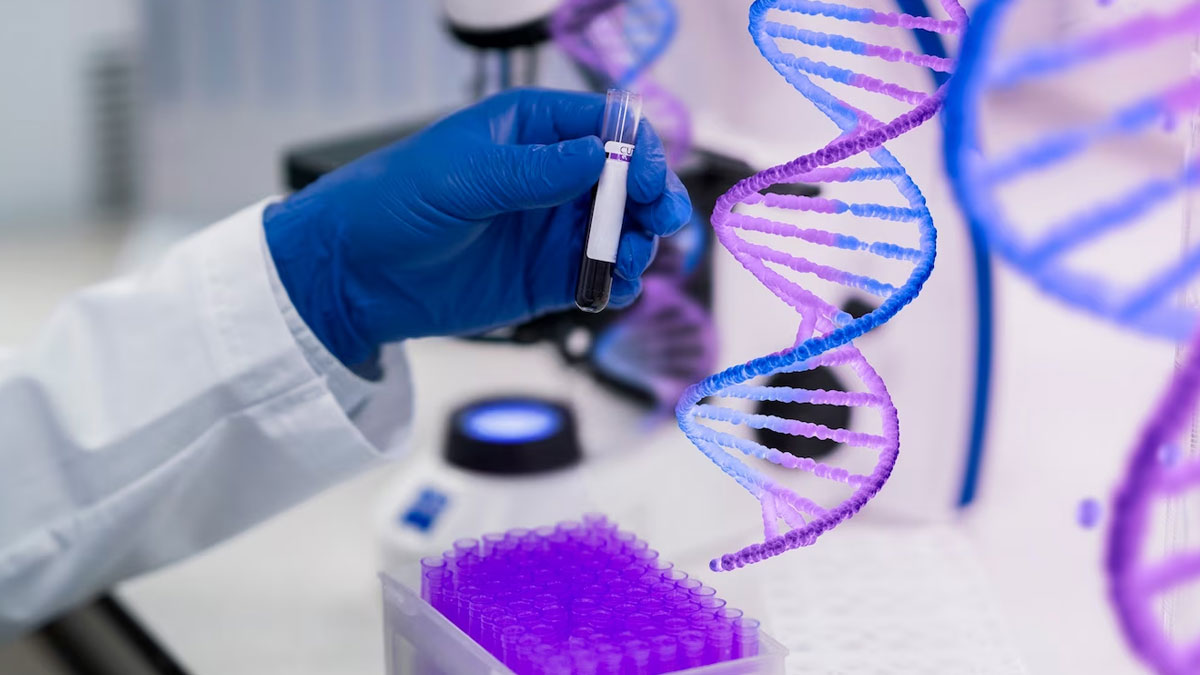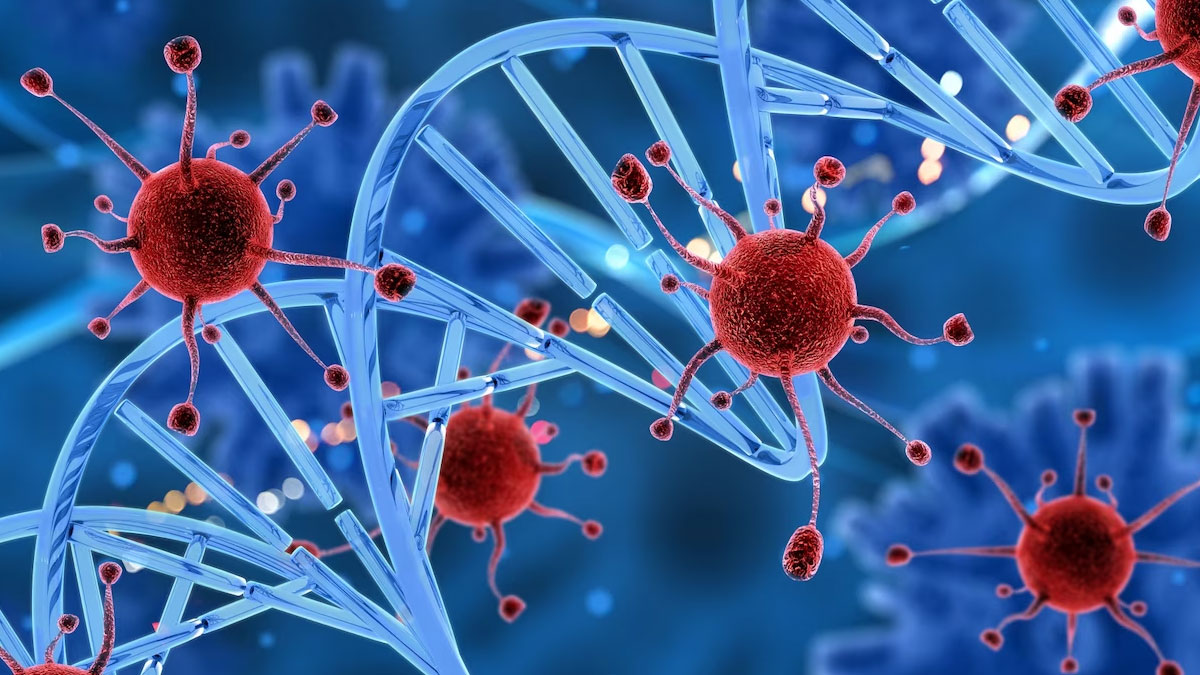
On November 13, 2025, Google users in India were greeted with a smart twist when Google’s iconic logo had transformed into a DNA-themed Doodle. The Doodle, which first appeared in the United States in September 2025, looked like the DNA molecule. According to the reposts, it is designed to spark curiosity among students and science lovers, where the colourful logo creatively reimagines the two ‘o’s and the second ‘g’ of Google as twisting DNA strands.
Table of Content:-
But this isn't just an artful design. Clicking on the Doodle takes users to an interactive AI-powered Google Search page that unpacks the facts and science of DNA-from how it copies itself to why even tiny errors in its sequence can change everything. Here is everything it explains.
What exactly is DNA?
DNA, or Deoxyribonucleic Acid, is the molecule responsible for carrying genetic instructions concerning the growth, development, and functioning of living things. From eye colour, and how the cells repair themselves to essentially everything in between, DNA is a biological instruction book upon which everything in one's life depends.
Also Read: 6 Simple Lifestyle Changes That Protect Your DNA's Biological Clock, Expert Tells

How Does DNA Copy Itself?
DNA replication occurs when a cell divides, making sure that it's an exact copy. For this, the double helix unwinds, and each strand acts as a template for building a new partner strand. This is facilitated through a rule known as complementary base pairing, i.e., Adenine (A) always pairs with Thymine (T), while Cytosine (C) always pairs with Guanine (G).
Additionally, DNA polymerase, an enzyme, helps to facilitate this process by reading the existing strand and adding matching building blocks, called nucleotides, to create an identical copy. The idea behind this is that when a cell divides, each of the new cells has identical genetic information. Scientists describe this as semi-conservative replication, because in the end each new DNA molecule contains one old strand and one newly made strand.
What Happens When Something in DNA Goes Wrong?
Sometimes, during DNA replication, tiny mistakes may occur, meaning, a misplaced letter here, a missing one there. These changes are called mutations. Although most of them are harmless or even corrected by the built-in DNA system, others can have noticeable effects. Either one of the following things may happen if something in DNA goes wrong:
- Some mutations have no effect (and are called silent mutations).
- Others might do slight changes in traits, for instance, changing hair or eye colour.
- Some mutations, although rare, result in human disease, for example, sickle cell anemia (caused by a single base change.)
Also Read: Can An Alcoholic Male Have A Healthy Baby? Find Out Here

Fun Way to Remember DNA Pairing Rules
The redirected doodle also explains a fun way students often use memory tricks to remember which bases go together. Such as:
- Apples in the Tree, Cars in the Garage: A pairs with T, C pairs with G.
- All Teachers Care about Grades: A-T, C-G.
Fun Facts About DNA
Here are some other cool facts about DNA that the editorial team of Onlymyhealth wants you to know:
- If you stretched out all the DNA in just one of your cells, it would be about 2 meters long, but it fits inside a cell nucleus that's smaller than a pinhead.
- Humans share about 99.9% of their DNA with every other person on this earth. It's that tiny 0.1% difference that makes every person unique.
- Humans share around 60 percent of their DNA with that of bananas.
- Every second, millions of cells are copying their DNA in your body so that old cells can be replaced with new ones.
- If all of the body's DNA were stretched and put end-to-end, it could stretch to the sun and back hundreds of times.
Bottomline
The DNA Doodle of Google is not a creative visual but an intelligent way to make millions stop and stare in wonder at the molecule that defines life itself. With a click, users are taken deep inside the building blocks of who we are-one base pair at a time.
Also watch this video
How we keep this article up to date:
We work with experts and keep a close eye on the latest in health and wellness. Whenever there is a new research or helpful information, we update our articles with accurate and useful advice.
Current Version
Nov 13, 2025 12:59 IST
Published By : Tanya Srivastava